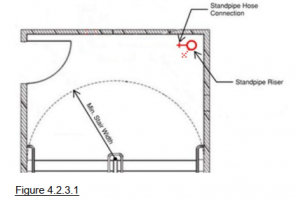mjw_accessibility
REGISTERED
Do standpipes within stairs need to meet the requirements of ICC A117.1 for protruding objects? I believe they do, as stairs can still be used by vision impaired people. Standpipe hose outlets have to be higher than 27" per NFPA 14, so they would qualify as a leading edge greater than 27". Would they qualify as post-mounted objects (Section 307.3)? If so, I do not think they would require cane detection as long as they do not protrude more than 4".

